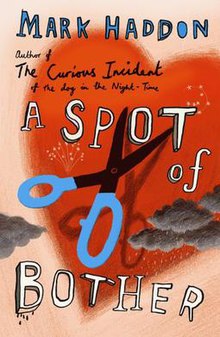
Brigadoon is a musical with a book and lyrics by Alan Jay Lerner, and music by Frederick Loewe. The song "Almost Like Being in Love", from the musical, has become a standard. It features two American tourists who stumble upon Brigadoon, a mysterious Scottish village that appears for only one day every 100 years. Tommy, one of the tourists, falls in love with Fiona, a young woman from Brigadoon.
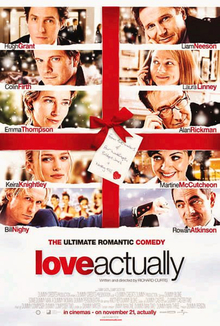
Love Actually is a 2003 British romantic comedy film written and directed by Richard Curtis. The Christmas holiday film features an ensemble cast, composed predominantly of British actors, many of whom had worked with Curtis in previous projects. An international co-production between the U.K., U.S., and France, it was mostly filmed on-location in London, England. The movie delves into different aspects of love as shown through 10 separate stories involving a variety of individuals, many of whom are interlinked as the plot progresses. The story begins five weeks before Christmas and is played out in a weekly countdown until the holiday, followed by an epilogue that takes place in the New Year.
Mark Haddon is an English novelist, best known for The Curious Incident of the Dog in the Night-Time (2003). He won the Whitbread Award, the Dolly Gray Children's Literature Award, Guardian Prize, and a Commonwealth Writers Prize for his work.
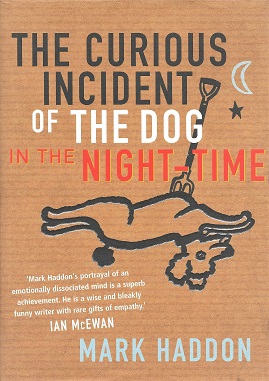
The Curious Incident of the Dog in the Night-Time is a 2003 mystery novel by British writer Mark Haddon. Its title refers to an observation by the fictional detective Sherlock Holmes in the 1892 short story "The Adventure of Silver Blaze". Haddon and The Curious Incident won the Whitbread Book Awards for Best Novel and Book of the Year, the Commonwealth Writers' Prize for Best First Book, and the Guardian Children's Fiction Prize. Unusually, it was published simultaneously in separate editions for adults and children.

Dying Inside is a science fiction novel by American writer Robert Silverberg. It was nominated for the Nebula Award in 1972, and both the Hugo and Locus Awards in 1973.

Master of the Game is a novel by Sidney Sheldon, first published in hardback format in 1982. Spanning four generations in the lives of the fictional McGregor/Blackwell family, the critically acclaimed novel spent four weeks at number one on The New York Times Best Seller list, and was later adapted into a 1984 television miniseries.

Dorothy Vernon of Haddon Hall is a 1902 historical novel written by Charles Major. Following the life and romances of Dorothy Vernon in Elizabethan England, the novel became the year's third most successful novel according to The Bookman annual list of bestselling novels. The novel was Charles Major's third, and his second bestseller, following When Knighthood Was in Flower.
The 1993 Pulitzer Prizes were:

Haddon Hall is an English light opera with music by Arthur Sullivan and a libretto by Sydney Grundy. The opera, set at the eponymous hall, dramatises the legend of Dorothy Vernon's elopement with John Manners, resetting the tale in the 17th century.
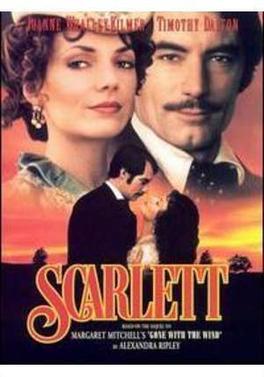
Scarlett is a 1994 American six-hour television miniseries loosely based on the 1991 book of the same name written by Alexandra Ripley as a sequel to Margaret Mitchell's 1936 novel Gone with the Wind. The series was filmed at 53 locations in the United States and abroad, and stars Joanne Whalley-Kilmer as Scarlett O'Hara, Timothy Dalton as Rhett Butler, and Sean Bean as Lord Richard Fenton. The miniseries was broadcast in four parts on CBS on November 13, 15, 16, and 17, 1994.
Coming Down the Mountain is a 2007 British television film which was shown on BBC One, written by Mark Haddon and directed by Julie Anne Robinson. The television film was based on a radio play also written by Haddon.

Dorothy Vernon of Haddon Hall is a 1924 American silent historical drama film directed by Marshall Neilan and starring Mary Pickford. The script by Waldemar Young was based upon the 1902 novel Dorothy Vernon of Haddon Hall by Charles Major.
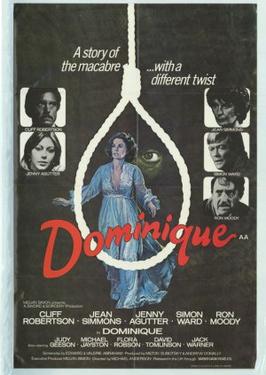
Dominique is a 1979 British psychological horror film directed by Michael Anderson, and starring Cliff Robertson, Jean Simmons, Simon Ward, Jenny Agutter and Ron Moody. The film is based on the 1948 short story "What Beckoning Ghost", written by American author Harold Lawlor. It centers on a wealthy businessman (Robertson) who is seemingly haunted by the ghost of his wife (Simmons), whom he drove to suicide.

The Decoy Bride is a 2011 British romantic comedy film written by comedian Sally Phillips and Neil Jaworski, and starring David Tennant, Alice Eve and Kelly Macdonald and set on the fictional island of Hegg, supposedly located in the Outer Hebrides of Scotland. The film was made by Ecosse Films.

The Hunter is a 2011 Australian drama film, directed by Daniel Nettheim and produced by Vincent Sheehan, based on the 1999 novel of the same name by Julia Leigh. It stars Willem Dafoe, Sam Neill and Frances O'Connor. Dafoe flew to Tasmania for the film's premiere at the State Cinema in North Hobart.

Les Misérables in Concert: The 25th Anniversary was performed and filmed at The O2 Arena in North Greenwich, London, England, on 3 October 2010 at 1:30 pm and 7:00 pm. It marked the 25th anniversary of the original West End production of Les Misérables, which was based on Victor Hugo's 1862 novel, and has been running since October 1985.

Dorothy Vernon, the younger daughter of Sir George Vernon and Margaret nee Talbois, was the heiress of Haddon Hall, an English country house in Derbyshire with its origins in the 12th century. She married John Manners in 1563. The couple's descendants, the Dukes of Rutland, continue to own Haddon Hall. A legend grew up in the 19th century that Vernon and Manners eloped, and a number of novels, dramatisations and other works of fiction have been based on the legend.

Dog & Scissors, also known by the abbreviation InuHasa (犬ハサ), is Japanese light novel series written by Shunsuke Sarai and illustrated by Tetsuhiro Nabeshima.

Kick-Ass: The Dave Lizewski Years is a creator-owned comic book series written by Mark Millar and illustrated by John Romita Jr.. The first instalment of the Hit-Girl & Kick-Ass franchise, it was initially published by Marvel Comics under the company's Icon imprint and republished under Image Comics. Set in the Millarworld, the series primarily tells the story of Dave Lizewski, a teenager who sets out to become a real life superhero. His actions are publicized on the Internet and inspire other people. He gets caught up with ruthless vigilantes Big Daddy and Mindy "Hit-Girl" McCready, who are on a mission to take down the Genovese crime family. Two stand-alone sequel series, Hit-Girl and Kick-Ass: The New Girl, respectively following Mindy and new villain protagonist Patience Lee, began publication in February 2018, before jointly concluding with the crossover miniseries Kick-Ass vs. Hit-Girl in March 2021. A further crossover, Big Game, was published from July to November 2023, following a now mid-20s Mindy as she teams up with Kingsman agent Eggsy Unwin against Wesley Gibson, while Dave is granted superpowers by the Magic Order.

A Spot of Bother, is a French comedy drama film directed by Alfred Lot and starring Michel Blanc, released in 2010, and based on the 2006 novel by the English writer Mark Haddon A Spot of Bother. It concerns the family crisis of a hypochondriac middle-aged man, his wife and grown-up children.
